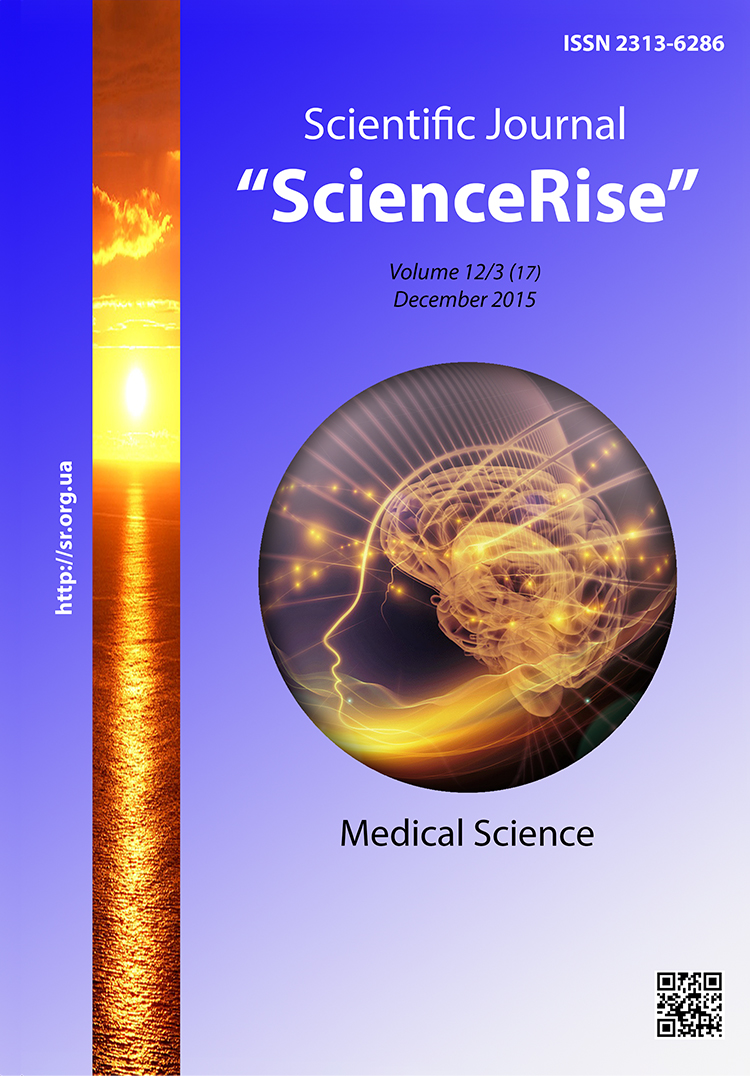Electrochemical processes in the patients oral cavity during their orthodontic treatment
DOI:
https://doi.org/10.15587/2313-8416.2015.57236Keywords:
metallic inclusions in the oral cavity, electrochemical potentials, orthodontic apparatus, intolerance to the metallic inclusions in oral cavity, galvanic couplesAbstract
Aim of research was to study the electrochemical potentials of metallic stomatological materials in oral cavity of patients who undergo orthodontic treatment that allows diminish the risk of the development of intolerance to metallic inclusions.
Materials and methods of research. 22 patients of both sexes 15-40 years old underwent clinical examination.
All patients had in their oral cavities the composition of several types of metallic inclusions: 3 persons – amalgam fillings and orthodontic apparatuses; 2 persons – one-piece steel crowns with ceramic coating and stationary retainers of the steel wire; 5 persons – bracket-system and retainers of wire. 12 persons underwent treatment with stationary apparatus. There were assessed the state of the mucous tunic in the oral cavity, the state of metallic inclusion surfaces and also there was measured the value of difference of electrochemical potentials between the metallic inclusions using biopotentialmeter BPM-03.
Results of research. The identical galvanic couples in the oral cavity had the different value of voltage in different patients that is obviously connected with an influence of electrolytic factors of saliva.
Despite the essential difference of potentials that was observed at presence of metallic inclusions in oral cavities of the most patients under observation the subjective and objective signs corresponding to galvanic syndrome were observed only in 4 patients.
Conclusions The data on the level of electrochemical potentials in combination with information about the state of metallic inclusion surfaces and data on anamnesis have a great importance for assessment of the possibility of appearance of intolerance to metallic inclusions and for its prophylaxis in the oral cavity of patients who undergo orthodontic treatment.
The combination of amalgam with orthodontic apparatus is the most unfavorable one from electrochemical point of view. Galvanic couples including bracket-system elements have the least effectiveness so the risk of appearance of intolerance to metallic inclusions is minimal
References
Biočina-Lukenda, D., Diz, P. (2006). US3 Allergy in dental practice. Oral Diseases, 12 (s1), 1–3. doi: 10.1111/j.1601-0825.2006.01306_14.x
Sergeev, Ju. V., Guseva, T. P. (2004). Allergycheskye reakcyy v klynyke ortopedycheskoj stomatologyy. Stomatolog, 5, 14—17.
Sutow, E. J., Maillet, W. A., Hall, G. C. (2006). Corrosion potential variation of aged dental amalgam restorations over time. Dental Materials, 22 (4), 325–329. doi: 10.1016/j.dental.2005.06.001
Markov, B. P., Kozin, V. N., Dzhirikov, Ju. A. et. al. (2003). Komleksnyj podhod k probleme individual'noj neperenosimosti stomatologicheskih konstrukcij iz razlichnyh materialov. Stomatologija, 3, 47—51.
Sutow, E. J., Maillet, W. A., Taylor, J. C., Hall, G. C., Millar, M. (2007). Time-dependent corrosion potential of newly-placed admixed dental amalgam restorations. Dental Materials, 23 (5), 644–647. doi: 10.1016/j.dental.2006.06.003
Tret'jakov, A. V. (2002). Prichiny neperenosimosti zubnyh protezov. Vіsnik stomatologіi, 2, 58–65.
Sevidova, E. K., Shhegoleva, M. G., Vasil'chenko, A. V. (2001). K voprosu o sovmestimosti razlichnyh amal'gamnih plombirovochnyh materialov. 2. Ocenka aktivnosti gal'vanopar s uchastiem amal'gamnih plombirovochnyh materialov. Medicina segodnja i zavtra, 4, 146–149.
Den'ga, O. V., Kolesnik, K. A. (2012). Vzaimosvjaz' chastoty zubocheljustnyh anomalij s urovnem somaticheskogo zdorov'ja (obzor literatury). Tavricheskij mediko-biologicheskij vestnik, 15 (2), 300–304.
Cheshire, W. P. (2000). The Shocking Tooth about Trigeminal Neuralgia. New England Journal of Medicine, 342 (26), 136. doi: 10.1056/nejm200006293422619
Timofeev, A. A. (2005). Pokazateli potenciometrii i nespecificheskoj rezistentnosti organizma u pacientov s metallicheskimi vkljuchenijami v polosti rta, fiksirovannymi na dental'nyh implantatah i zubah. Sovremennaja stomatologija, 4, 133–138.
Timofeev, A. A., Gorobec, E. V., Zhezzini, A. A. (2001). Vlijanie jelektrohimicheskoj aktivnosti tkanej polosti rta na sostojanie nespecificheskoj rezistentnosti organizma. Voprosy jeksperimental'noj i klinicheskoj stomatologii, 4, 39–42.
Downloads
Published
Issue
Section
License
Copyright (c) 2015 Мария Георгиевна Щеголева

This work is licensed under a Creative Commons Attribution 4.0 International License.
Our journal abides by the Creative Commons CC BY copyright rights and permissions for open access journals.
Authors, who are published in this journal, agree to the following conditions:
1. The authors reserve the right to authorship of the work and pass the first publication right of this work to the journal under the terms of a Creative Commons CC BY, which allows others to freely distribute the published research with the obligatory reference to the authors of the original work and the first publication of the work in this journal.
2. The authors have the right to conclude separate supplement agreements that relate to non-exclusive work distribution in the form in which it has been published by the journal (for example, to upload the work to the online storage of the journal or publish it as part of a monograph), provided that the reference to the first publication of the work in this journal is included.

